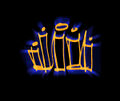Template:Selected anniversaries/September 9: Difference between revisions
(Created page with "<gallery mode="traditional"> File:Exponential-growth-diagram.svg|link=Crimes against mathematical constants|"Conspiracy theories of about crimes against mathematical constan...") |
No edit summary |
||
| (34 intermediate revisions by the same user not shown) | |||
| Line 1: | Line 1: | ||
<gallery | <gallery> | ||
File: | |||
File:Luigi Galvani.jpg|link=Luigi Galvani (nonfiction)|1737: Physician and physicist [[Luigi Galvani (nonfiction)|Luigi Galvani]] born. In 1780, he will discover that the muscles of dead frogs' legs twitch when struck by an electrical spark. | |||
||1789: William Cranch Bond born ... astronomer, and the first director of Harvard College Observatory. Pic. | |||
||1839: John Herschel takes the first glass plate photograph. Pic. | |||
||1841: Augustin Pyramus de Candolle born ... botanist, mycologist, and academic. Pic. | |||
||1852: John Henry Poynting born ... physicist. He was the developer and eponym of the Poynting vector, which describes the direction and magnitude of electromagnetic energy flow and is used in the Poynting theorem, a statement about energy conservation for electric and magnetic fields. Pic. | |||
||1854: Baron Yamakawa Kenjirō ...Japanese samurai of the late Edo period who went on to become a noted physicist, university president, and author of several histories of the Boshin War. Pic. | |||
||1860: Frank Morley born ... mathematician, known mostly for his teaching and research in the fields of algebra and geometry. Pic. | |||
||1883: Victor Puiseux dies ... mathematician and astronomer. Puiseux series are named after him, as is in part the Bertrand–Diquet–Puiseux theorem. Pic. | |||
||1888: Wallace Akers born ... chemist and industrialist. Beginning his academic career at Oxford he specialized in physical chemistry. During the Second World War, he was the director of the Tube Alloys project, a clandestine programme aiming to research and develop British atomic weapons capabilities Pic. | |||
||1892: Amalthea, third moon of Jupiter is discovered by Edward Emerson Barnard. Pic. | |||
||1893: Friedrich Traugott Kützing dies ... pharmacist, botanist and phycologist ... diatoms v. desmids. Pic search yes: https://www.google.com/search?q=Friedrich+Traugott+Kützing | |||
||1912: Physicist Heinrich Johann Welker born. Welker invented the "transistron", a transistor made at Westinghouse independently of the first successful transistor made at Bell Laboratories. He did fundamental work in III-V compound semiconductors, and paved the way for microwave semiconductor elements and laser diodes. | |||
||1920: Feng Kang born ... mathematician and physicist. Pic search good: https://www.google.com/search?q=Feng+Kang+mathematician | |||
||1922: Hans Georg Dehmelt born ... physicist and academic, Nobel Prize laureate. Pic. | |||
||1941: Dennis Ritchie born ... computer scientist, created the C programming language. Pic. | |||
File:First computer bug.jpg|link=Software defect (nonfiction)|1947: First case of a [[Software defect (nonfiction)|computer bug]] being found: A moth lodges in a relay of a Harvard Mark II computer at Harvard University. | |||
File:Viking orbiter.jpg|link=Viking 2 (nonfiction)|1975: Viking program: [[Viking 2 (nonfiction)|Viking 2]] launched. Following a 333-day cruise to Mars, the Viking orbiter will begin returning global images of Mars. | |||
||1985: Paul Flory dies ... chemist and engineer, Nobel Prize laureate. Pic. | |||
||1995: Reinhard Furrer born ... physicist and astronaut. Pic. | |||
||2002: Geoffrey Dummer dies ... electronics engineer and consultant who is credited as being the first person to conceptualise and build a prototype of the integrated circuit, commonly called the microchip, in the late-1940s and early 1950s. Pic. | |||
File:Edward Teller 1958.jpg|link=Edward Teller (nonfiction)|2003: Theoretical physicist and academic [[Edward Teller (nonfiction)|Edward Teller]] dies. He is known colloquially as "the father of the hydrogen bomb", although he did not care for the epithet. | |||
||2004: The Ryanggang explosion ... North Korea in the northern province of Ryanggang. The nature and cause of the suspected explosion is the subject of speculation. No neighboring nations have claimed any detection of radioactive isotopes characteristic of a nuclear explosion. Pic. | |||
||2010: Bent Larsen dies ... chess player and author. Pic (cool). | |||
File:Dennis_Paulson_of_Mars.jpg|link=Dennis Paulson of Mars|2017: ''[[Dennis Paulson of Mars]]'' celebrates the forty-second anniversary of the launch of the [[Viking 2 (nonfiction)|Viking 2]] spacecraft. | |||
File:Embassy.jpg|link=Embassy|2018: Updated version of ''[[Embassy]]'' published. "The old version was so dark, it was barely visible. This version is much more to my taste," says artist Karl Jones. | |||
</gallery> | </gallery> | ||
Latest revision as of 08:06, 1 April 2024
1737: Physician and physicist Luigi Galvani born. In 1780, he will discover that the muscles of dead frogs' legs twitch when struck by an electrical spark.
1947: First case of a computer bug being found: A moth lodges in a relay of a Harvard Mark II computer at Harvard University.
1975: Viking program: Viking 2 launched. Following a 333-day cruise to Mars, the Viking orbiter will begin returning global images of Mars.
2003: Theoretical physicist and academic Edward Teller dies. He is known colloquially as "the father of the hydrogen bomb", although he did not care for the epithet.
2017: Dennis Paulson of Mars celebrates the forty-second anniversary of the launch of the Viking 2 spacecraft.
2018: Updated version of Embassy published. "The old version was so dark, it was barely visible. This version is much more to my taste," says artist Karl Jones.





